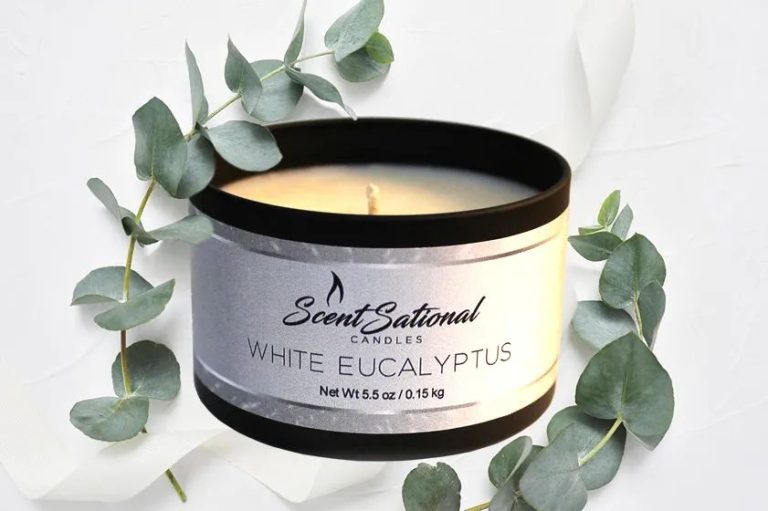What Perfume Is Good For Cigarette Smell?
Why Cigarette Smell Lingers
Cigarette smoke is composed of thousands of chemicals that can get trapped in hair, clothes, furniture, and other materials long after a cigarette has been put out (source). These chemicals interact with materials to create persistent odors that are difficult to remove. According to Quora, the chemicals in cigarette smoke are “sticky” and cling to surfaces, fabrics, skin, and hair (source). The tar and nicotine in cigarette smoke are especially tenacious and can cause lingering odors. Even smoking out a window or using air fresheners cannot eliminate the smell entirely.
Masking vs. Eliminating Odor
While perfumes and fragrances can help mask or cover up cigarette odors, they don’t actually eliminate the smell. As Cleanlink reports, “Masking agents don’t remove odors from the air – they simply overwhelm unpleasant smells with a stronger, more appealing fragrance.”
This is because the source of the cigarette odor remains even after applying a perfume. The lingering smell comes from chemicals that have absorbed into surfaces, fabrics, hair, and skin. A fragranced product can only temporarily override these odors with its own scent.
According to Involveyoursenses, “Masking products like fragrances, candles, and plugins work to cover up odors with pleasant scents. While this certainly works in the short term, it’s not a permanent fix since the original odor is still there once the fragrance fades.”
So while perfumes can provide a quick fix for unwanted cigarette smells, they don’t provide a complete solution. To fully eliminate tobacco odors, you need products that neutralize or destroy the odor molecules themselves.
Best Fragrance Notes to Mask Cigarette Smell
Certain fragrance notes are known to be effective at masking cigarette odors. Florals, orientals, and gourmands tend to work best at covering up the lingering smell of smoke.
Florals like jasmine, rose, orange blossom, and tuberose have a sweet, fresh scent that helps override cigarette odors. As noted on Basenotes.com, “The richer florals like tuberose and jasmine have tenacity and can really dominate a fragrance blend.”
Oriental perfumes often contain warm, spicy notes like amber, vanilla, cinnamon, and patchouli. These richer scents are bold enough to mask smoky residue. Fragranctica.com recommends orientals such as Shalimar by Guerlain, Opium by YSL, Coco Mademoiselle by Chanel.
Gourmand fragrances with edible, dessert-like notes of caramel, coffee, praline, and vanilla also cover the smell of smoke effectively. Their sweet, indulgent scents are strong and tenacious. According to Quora users, Angel by Thierry Mugler and Black Opium by YSL are two excellent gourmand choices.
Perfumes With High Sillage
Sillage refers to how far a perfume’s scent projects and how noticeable it is to those around you. Perfumes with high sillage have powerful, far-reaching scents that leave a lasting impression. According to Fragrantica, some popular high sillage perfumes include Chanel No. 5, Yves Saint Laurent Opium, Christian Dior Poison, Giorgio Armani Si, Lancôme La Vie Est Belle, and Calvin Klein Euphoria [1]. These fragrances contain bold notes like amber, vanilla, jasmine, and spices that really announce their presence. TikTokers also recommend affordable high sillage options like Ariana Grande Cloud, Rihanna Rebelle, and Bath & Body Works fragrances [2].
High sillage perfumes tend to contain light, volatile ingredients that disperse widely in the air, according to Oxor Perfumes. Notes like citrus, white florals, sweet gourmands, and synthetic musks are common in big sillage scents. If you want to leave a lingering impression when you walk by, a perfume with strong projection is key [3].
Applying Perfume to Cover Smell
One of the most effective ways to use perfume to cover up cigarette odor is to apply it directly to your hair, clothes, and home textiles like curtains. The National Center for Health Research explains that cigarette smoke gets trapped in hair and fabrics, causing the lingering smell. Perfume helps mask and override this trapped odor.
Spray perfume generously on any hair that was exposed to cigarette smoke, including your head hair, facial hair, and body hair. Let it dry naturally rather than rinsing it out. The perfume notes will help neutralize and conceal the smoke.

For clothing, mist a light coating of perfume onto any garments, jackets, or scarves that retained the cigarette smell. Make sure to apply it evenly and avoid saturating the material. You can also lightly spray curtains, upholstered furniture, and other smoke-infused housewares.
According to makeup artist Bobbi Brown on The Strategist, perfume works better than Febreze to remove odors from fabrics. Avoid rubbing it in, which can stain. Let the perfume dry fully before wearing clothes or sitting on treated furniture.
Applying perfume to hair, apparel, and textiles helps tackle cigarette odor right at the source. The fragrance notes act like a masking agent to conceal the unwanted smell of smoke.
Other Ways to Remove Cigarette Odor
In addition to using perfumes and fragrances, there are some other effective home remedies that can help eliminate cigarette smell:
Baking soda is a versatile household product that can be used to absorb odors. Sprinkling baking soda on upholstered furniture and carpets before vacuuming can help remove stubborn cigarette smells. Baking soda can also be placed in bowls around the house to act as natural air fresheners (Citywide).
Distilled white vinegar is another affordable and non-toxic cleaning agent. Wiping down surfaces with diluted vinegar can neutralize odors left behind by cigarette smoke. Put vinegar in a spray bottle to spritz on drapes, furniture, bedding, and carpets. The acidic vinegar smell dissipates as it dries (Citywide).
Steam cleaning carpets, upholstery, and other porous surfaces can help release trapped odors from cigarette smoke. The hot steam helps open pores in fabrics to drive out contaminants. Hiring professional carpet cleaners to steam clean once or twice a year can keep odors at bay.
Quitting Smoking
Quitting smoking provides numerous health benefits at any age. According to the Surgeon General’s 1990 Report on the Health Benefits of Smoking Cessation, people who quit smoking reduce their risk of dying from lung cancer, heart disease, chronic lung disease, stroke, and other cancers [1]. One of the most notable benefits is improved skin health and appearance. After quitting smoking, blood flow improves, wrinkles start to fade, skin tone evens out, and skin becomes brighter and healthier looking. According to Healthline, skin takes on a healthier glow as early as a month after quitting as circulation improves and vitamin levels increase [2].
There are many options available to aid the process of quitting smoking including nicotine replacement therapy, prescription medications, counseling, support groups, mobile apps, and hypnotherapy. Setting a quit date, removing smoking triggers, changing routines, avoiding alcohol, drinking more water, and engaging in physical activity can also help smokers successfully kick the habit.
Secondhand Smoke Risks
Secondhand smoke, also called passive smoking or environmental tobacco smoke (ETS), refers to both the smoke exhaled from a smoker as well as the smoke that comes directly from the end of a burning cigarette, pipe, or cigar. According to the WHO, there is no safe level of exposure to secondhand smoke. Even brief exposure has immediate harmful effects on the heart and blood vessels that can increase the risk of heart disease. Longer-term exposure can lead to lung cancer, respiratory infections, and asthma in adults. In children, it can lead to sudden infant death syndrome, respiratory infections, ear infections, and more severe asthma.
Secondhand smoke contains over 7,000 chemicals, hundreds of which are toxic and 70 that can cause cancer [1]. There is no way to effectively eliminate the risks of secondhand smoke except by implementing 100% smokefree environments. Separating smokers from nonsmokers, cleaning the air, and ventilating buildings cannot eliminate exposure to secondhand smoke.
Children are especially vulnerable to secondhand smoke. Infants and young children exposed to secondhand smoke are at increased risk of dying from SIDS, ear infections, severe asthma attacks, pneumonia, and bronchitis. Secondhand smoke can also affect a child’s developing brain and lungs. It is estimated that more than 200,000 lower respiratory tract infections in children younger than 18 months of age are attributed to secondhand smoke exposure annually. More than 150,000 of these infections result in hospitalization.
Pets are also at risk from secondhand smoke. Dogs, cats, birds, and other pets that live in a smoker’s home are constantly exposed to the smoke and can develop life-threatening diseases such as lung cancer as a result [2]. Long nosed pets like dogs are especially vulnerable since they are closer to the ground where heavier smoke particles settle.
Even nonsmokers who do not live with a smoker can be exposed to lingering cigarette smoke contaminants in environments like hotels, casinos, and cars. There is no safe level of exposure, and even brief encounters can present health risks.
Making Your Home Smoke-Free
One of the most effective ways to eliminate cigarette smell from your home is to make it completely smoke-free. According to the Healthy Children organization, you should never smoke inside your home, even when it’s cold outside. They recommend creating a comfortable outdoor smoking area for yourself and any visitors who smoke
The Smokefree.gov site also advises choosing outdoor smoking areas away from doors, windows, and air intakes. Set clear rules that smoking is only allowed outside. Ask smokers to smoke outside before they come into your home. Making these rules and sticking to them can dramatically reduce cigarette odor inside.
Going completely smoke-free has health benefits too. It protects non-smokers, especially children, from the dangers of secondhand smoke. Secondhand smoke contains over 7,000 chemicals, hundreds of which are toxic. There is no safe level of exposure. Making your home 100% smokefree is the only way to fully eliminate secondhand smoke exposure.
Seeking Support to Quit Smoking
Quitting smoking can be extremely challenging, but seeking support can help make the process easier. There are many resources available to help you on your journey to becoming smoke-free.
National quitlines like SAMHSA’s National Helpline provide free, confidential counseling and support for quitting smoking. You can call or chat online with trained counselors who can help you develop a personalized quit plan, offer tips for managing cravings and withdrawal symptoms, and connect you with local resources.
There are also many smoking cessation apps like QuitStart from the National Cancer Institute that provide tools for tracking smoking triggers, coping strategies, medication reminders and more. Connecting with a community of people trying to quit can help provide daily motivation and accountability.
You may also want to consider joining a support group or seeking one-on-one counseling from a trained therapist. Having an experienced professional guide you through the process can greatly improve your chances of successfully quitting smoking for good. Your doctor may also be able to connect you with smoking cessation programs and prescribe medications to curb cravings.
Embarking on your smoke-free journey does not have to be done alone. Tap into the many resources available to help you quit smoking and start living a healthier life.




